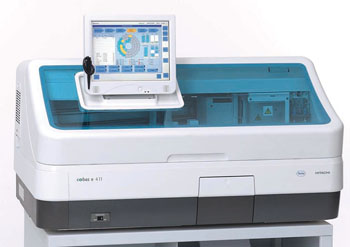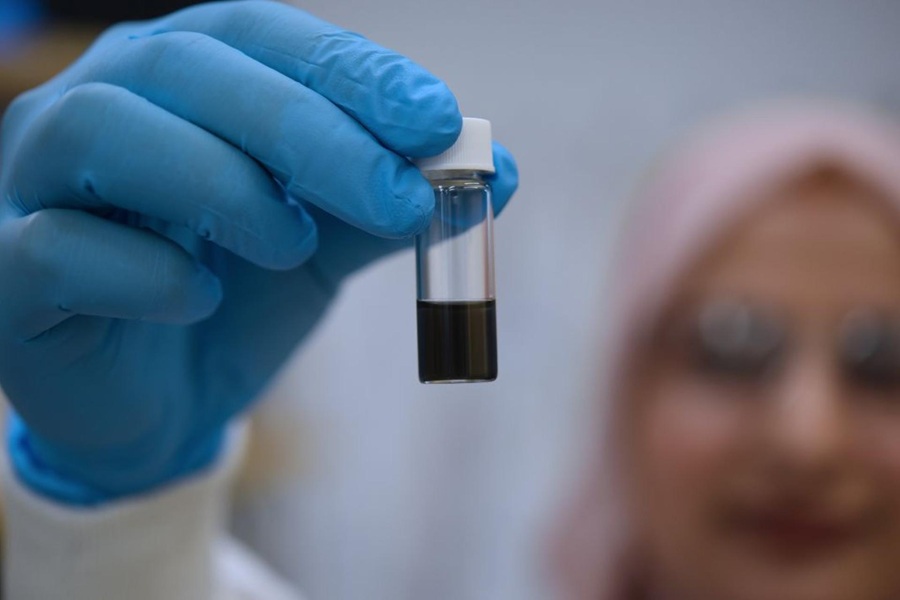Semiautomated Immunoassay for Post-Transplantation Immunosuppressant Assessed
By LabMedica International staff writers
Posted on 29 Apr 2014
Strategies to improve the long-term preservation of organ function and to reduce the incidence of accompanying diseases such as infections, renal insufficiency, cardiovascular disease and malignancy associated with immunosuppression are increasingly important.Posted on 29 Apr 2014
Tacrolimus (TAC) is a post-transplantation immunosuppressant drug used in patients for whom careful monitoring of TAC concentration is essential and a new semiautomated immunoassay for TAC measurements is available and has been assessed in a multicenter evaluation.

Image: cobas e 411 immunoassay analyzers (Photo courtesy of Roche Diagnostics).
A team of scientists from Klinikum-Stuttgart (Stuttgart, Germany) examined residual whole blood samples from patients undergoing TAC therapy after organ transplant and were used in assay evaluation at five clinical laboratories in Europe from October 2012 to April 2013. Studies included imprecision within-run and intermediate, functional sensitivity, linearity, and recovery from external quality assessment scheme (EQAS) samples. The assay was compared to liquid chromatography tandem mass spectrometry (LC–MS/MS) used routinely at each investigational site, and to another commercial immunoassay.
The team evaluated the Elecsys Tacrolimus immunoassay which was developed by developed by Roche Diagnostics for use on the cobas e immunoassay analyzers (Basel, Switzerland). The Elecsys Tacrolimus immunoassay uses the principle of electrochemiluminescence for detection and measurement. This assay was compared with in three centers to an immunoassay from Abbott Architect (Abbott Park, IL, USA) and in five centers to LC–MS/MS analysis.
The investigators observed linearity from 0.5 to 40 μg/L and determined a functional sensitivity of 0.3 μg/L. The within-run imprecision was less than 5.1% on cobas e 602 (5.1% at 1.5 μg/L) and less than 8.9% (8.9% at 0.8 μg/L) on cobas e 411. The intermediate imprecision for TAC concentrations equal to or greater than 6.8 μg/L was less than 6.5%. At lower therapeutic concentrations to 1.5 μg/L, it was consistently less than 10%.
The authors concluded that the assay performed well at all investigator sites, implementation and handling were simple, no deviation from the manufacturer insert information regarding calibration and or reagent stability was observed. The Elecsys Tacrolimus assay has good linearity, functional sensitivity and intermediate imprecision and is comparable to LC–MS/MS methods. The over-all performance of electrochemiluminescence immunoassay demonstrates a modern generation TAC assay that meets the demands of monitoring drug concentrations in current immunosuppressive regimens. The study was published on April 12, 2014, in the journal Clinical Biochemistry.
Related Links:
Klinikum-Stuttgart
Roche Diagnostics
Abbott













